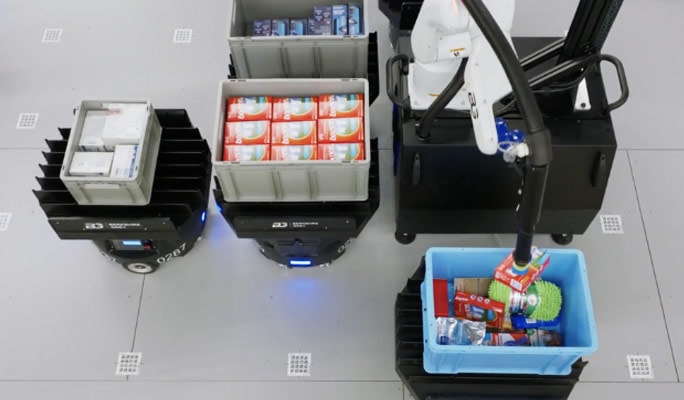What is Peak Season?
Peak season is the time of year that businesses and supply chains see the most significant amount of demand and traffic. Of course, the exact timing of peak season varies by industry. Still, for large consumer-facing sectors such as eCommerce, peak season is typically a range between October and January, with particular emphasis on holidays.
In the manufacturing, distribution, and fulfillment industries, peak season can bring about challenges that can cost companies significant time, money, and consumer sentiment if they cannot prepare accordingly. Moreover, since the pandemic, supply chains across the world have faced more challenges than ever before, especially during seasonal peaks.
Peak season can be make-or-break for virtually any business reliant on a supply chain to get goods to consumers – eCommerce, 3PL, retail, grocery, post and parcel, and more.
Limited warehouse space, unexpected outages, routine machine downtime, increased shipping demands, physical distancing, and the growing labor scarcity are just some of the many challenges enterprises must combat to take advantage of the most lucrative parts of the year.
Fortunately, intelligent robotic solutions aim to conquer the challenges of peak season. In fact, many major retailers have already made significant strides toward automated fulfillment and other retail automation solutions. These opportunities, along with the appropriate preparation tactics, can improve a company’s peak process and more during their peak season.
How to Prepare for Peak Season

In the months leading up to the peak holiday season, forward-thinking retailers are already executing automation initiatives. Simultaneously, these enterprises are fine-tuning strategies to take productivity and efficiency to the next level as demand peaks.
Preparations for peak season will vary for every business, but there are many considerations that enterprises should emphasize for a peak in business. Working with an expert in supply chain management can help identify weaknesses in your supply chain or fulfillment operations while offering solutions to address these faults.
Part of the prep for peak season should involve assessing your order processing needs based on forecasted demand. This information may be informed by past peak seasons and industry outlooks and forecasts. If there is a gap between your projected needs and what can be provided through your supply chain or fulfillment operations, you may need to adjust. For example, if your order picking speed will bottleneck order fulfillment, an automated picking solution could help your business during peak season.
As peak season approaches, creating contingency plans for mission-critical business areas is essential. In today’s world, supply chain challenges can appear at any time, especially during peak season. Having plans in place to pivot as needed is a crucial component of preparing for peak season.

The Berkshire Grey Solution
Berkshire Grey is a trusted partner to enterprises that want to stay ahead in warehouse innovation and fulfillment efficiency. Robotic automation is the key to meeting consumer demands and operating smoothly during peak season, especially as recent years throw more challenges than usual for many industries due to supply chain challenges and increased demand.
Transform existing processes
Berkshire Grey’s Robotic Pick Cells (BG RPC) can reduce production costs alongside the initial investment capital by directly interfacing with pre-existing conveyor-based, ASRS, and micro fulfillment solutions.
Automate mobile sortation
Manual order picking and sorting can be tediously slow, costly, and even dangerous. To meet peak season demand, companies need to optimize this process to keep up with orders. Berkshire Grey’s Mobile Robotic Platform (BG FLEX™) systems use orchestrated fleets of mobile robots that enable dynamic any-to-any induct, discharging sortation that delivers faster fulfillment for less labor.
Enhance current sortation systems
Peak Season Preparation is Paramount
Preparation is key to the success of any business, and this is particularly true when it comes to peak season. Fulfillment operations take time to plan, implement, and test. The best time to get ready for peak season is before peak season. Seeking out automation solutions for processes that might be time-consuming can be a good first step.
Why Berkshire Grey?
Increased reliability
Decreased operating costs
Using Berkshire Grey’s robotic systems, enterprises can extend various operating hours without adding additional shifts or operators. Companies that partner with Berkshire Grey can look forward to cutting production costs through intelligent strategies and cutting-edge technology.
Improved throughput
Berkshire Grey routinely delivers solutions through artificial intelligence and impressive machine learning to allow companies to continuously improve their bottom line.
FAQs
While the seasonal peak for each industry varies, peak months are most often the months of June, July, August, September, and October.
However, for the airline industry, for example, the peak seasonal range may be much shorter, and it differs by hemisphere. In the southern hemisphere, seasonal peaks are from November to February, while it’s from June to August in the northern hemisphere.
The busiest, highest-moving season of the year is considered a business’ seasonal peak, or “high season.” Meanwhile, the least busy period of the year would be considered the “off season,” “low season,” or “lean season.”
Get Started
with Berkshire Grey
Contact the BG Fulfillment Automation Sales Engineering Team to Learn How to:
- Reduce operations expense by up to 70%.
- Lessen your dependency on labor.
- Bolster facility throughput by up to 25% to 50% with automation.
- Get a customized ROI analysis of your specific environment and business.
Call +1 (833) 848-9900 or connect using our form.
